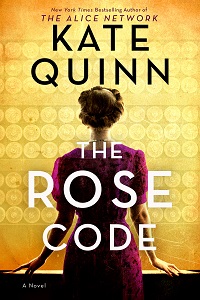During the three-month voyage, a selection of women, under Miss Hayter's guidance, stitched an impressively detailed quilt. It was presented to Jane, Lady Franklin, wife of the Lieutenant-Governor of Van Diemen's Land, upon their arrival. The quilt was returned to Britain, lost for a time, then rediscovered in 1989. It now resides in the National Gallery of Australia. Due to its fragile condition, it's made available for public viewing just once annually.
 |
| public domain photo of the Rajah quilt (via Wikimedia Commons) |
The novel works as a combination of locked room-style crime novel (although aboard ship) and thought-provoking adventure story. Both of these elements are evenly balanced.
Toward the end of the journey, one of Kezia's needlewomen, Hattie Matthews, the mother of a young son, is stabbed while standing at the railing on deck. The motive is unknown, and Hattie is too badly wounded to reveal who did it. One of the women, though, is hiding her past and impersonating someone else; we know her birth name, Clara, but not the name she assumed on board. There are plenty of secrets stirring.
The story then looks back to follow the women as they settle into their cramped quarters, form alliances, and find ways of passing the time. Two seem to be in a sexual relationship, and drama unfolds after one of them acts on her attraction to another. As the crew's investigation continues, everyone feels on edge since the attacker could easily strike again. Multiple perspectives show the backgrounds of some of the women who, Kezia realizes, "were often victims... women who'd fallen into petty crime through association with criminal men, or had been put to work as thieves by brutal husbands and fathers."
The chapters, labeled "Then" and "Now," alternate between the beginning of the voyage and the aftermath of the crime. I had to pay close attention to the labels and dates in the chapter openings or risk getting confused.
Despite the terrible circumstances some women endure, Hattie included, this is ultimately a hopeful story about new beginnings and what disparate women can accomplish when working toward a common goal. As one of them remarks: "We're many small pieces, each of us different but now stitched together. A patchwork of souls."
Dangerous Women was published in February by Berkley; I read it from an OverDrive copy through my library.




























